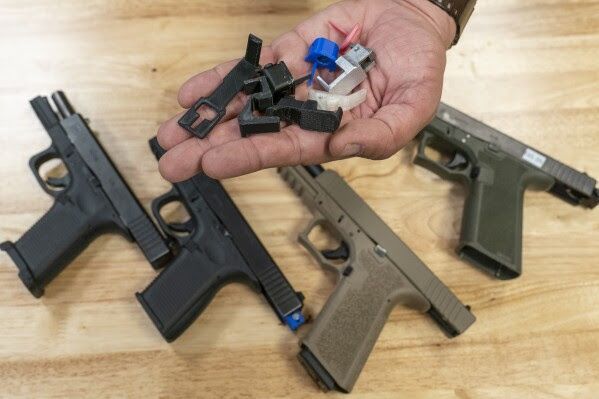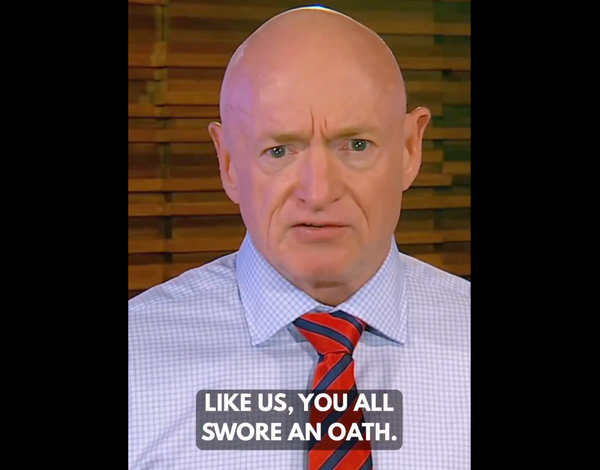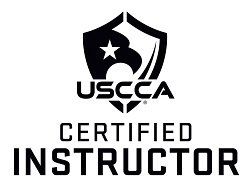Gregory Kielma • October 20, 2023

By Tom McHale
07/30/2019
What Are the Types of Guns?
First, if you’re new to the world of guns and shooting … welcome! Glad to have you joining millions of other law-abiding citizens enjoying fun, competition and the peace of mind to protect yourself and your family.
Second, you’re about to see just how confusing things can be. We’re talking about new terminology, mastering new skills and a seemingly infinite amount of gear from which to choose. Don’t feel bad if you’re overwhelmed. We were all at that stage at one point.
To tackle the question, “What are the types of guns?,” we need to look at three related categories.
Types of Guns
Rifles
While movie heroes can do pretty much anything one-handed, the mere mortal definition of “rifle” is a firearm designed to be held with two hands and shouldered for support. Technically speaking, a rifle also has a rifled barrel, which imparts spin on the bullet to help it fly straight and true. Virtually every modern rifle has rifling in the barrel, so we don’t really make this distinction anymore.
The federal government, through the Bureau of Alcohol, Tobacco, Firearms and Explosives (BATFE), extends the classic definition by clarifying that a rifle can only fire one projectile at a time with each press of the trigger. In the United States, rifles also have to have a barrel length of at least 16 inches.
Examples of modern rifles include hunting models (such as the Savage Model 110), modern sporting rifles (such as the Smith & Wesson M&P 15) and competition target rifles (such as the Anschutz).
Shotguns
Like rifles, shotguns are two-handed firearms designed to be fired from the shoulder. While there are shotguns that use portions of or have entire rifled barrels, the technical definition provided by the BATFE defines a “shotgun” as having a smooth — not rifled— bore. Also, a shotgun is designed to fire multiple projectiles at once with a single press of the trigger. To be clear, it’s not anything like a machine gun (where projectiles are fired sequentially with a single trigger movement). A shotgun can, but doesn’t always, contain multiple shot pellets in each cartridge or shell. To be legal, a true shotgun in the technical sense cannot have a barrel shorter than 18 inches.
Handguns
As the name implies, “handguns” are designed to be fired from a single hand, although modern handgun technique usually recommends two-handed operation for stability unless there are specific reasons to use a single hand. There are two major classifications of handguns: pistols and revolvers.
Pistols
Defining a pistol gets a bit sticky, so we will quote BATFE directly:
A pistol is a handgun that has the chamber integrated as part of the barrel. Ammunition is fed to the chamber from a separate magazine.
“The term ‘pistol’ means a weapon originally designed, made and intended to fire a projectile (bullet) from one or more barrels when held in one hand, and having:
• a chamber(s) as an integral part(s) of, or permanently aligned with, the bore(s);
• and a short stock designed to be gripped by one hand at an angle to and extending below the line of the bore(s).”
Common examples of pistols include the Glock, Smith & Wesson M&P and SIG Sauer P320.
Revolvers
A revolver is also a handgun, but the chamber is not permanently integrated or in line with the barrel. Instead, cartridges are stored in chambers bored into a cylinder and rotated into alignment with the barrel as needed.
A revolver has multiple chambers, and each rotates the barrel into position with its cartridge before firing.
Types of Actions
Throughout firearms history, inventors have devised a host of ways for firearms to operate. The earliest firearms had to be loaded from the muzzle and ignited with burning rope or sparks. More modern arms are loaded from the breech (back) end and have a variety of action types that control how cartridges are loaded, spent cases are extracted and new rounds are loaded.
Pump-Action Firearms
Usually applicable to shotguns and some rifles, pump-action firearms have a sliding mechanism operated by the user that extracts spent shells or cases, re-cocks the action or hammer, and loads a new shell. For each shot, the user must complete the pump sequence.
Semi-Automatic Firearms
Often confused — and frequently deliberately — by the media, semi-automatic firearms harness some of the energy from a cartridge to extract a spent cartridge case, re-cock the firearm and load a new cartridge. A semi-automatic firearm only fires one shot with each press of the trigger. It is not a machine gun.
Semi-automatic firearms are the most popular (as measured by numbers sold and shipped) action type in the firearms world. Pistols, rifles and shotguns can all have semi-automatic actions. Virtually every pistol carried by law enforcement officers in the United States is a semi-automatic. As for rifles, the ubiquitous AR-15 is also a semi-automatic. Many shotguns also operate as semi-automatics too.
Bolt-Action Firearms
If someone asks you to picture a hunting rifle, you’ll likely picture a bolt-action. To be clear, hunting rifles have all action types, including semi-automatic. It’s just that a large number through the past 100 years have been bolt-actions.
Bolt-action rifles, such as this Savage M11, require the operator to cycle the bolt before each shot to extract a cartridge, cock the action and load a fresh cartridge. \
Like a pump-action, a bolt-action requires the operator to cycle the bolt handle before each shot. Retracting the bolt pulls the empty (or unspent) cartridge out of the chamber, and pushing the bolt forward loads a new cartridge into place. Some bolt-actions cock the firing pin on the backstroke, while others do so on the forward push.
Break-Action Firearms
There are break-action handguns and rifles, but the most prevalent example is the double-barrel shotgun. A lever on the receiver allows the barrel(s) to tilt forward and away from the action, exposing the chamber or chambers for loading and unloading. To load a break-action, one just drops new shells or cartridges into the chambers directly before closing the action.
The most common examples of break-action firearms are double-barrel shotguns.
Muzzle-Loading Firearms
While historical guns were almost always muzzleloaders, there are plenty of modern examples too. As many states have muzzle-loader-specific hunting seasons, modern rifles from companies such as Thompson Center continue to innovate with single-shot, load-from-the-front rifles.
NFA Firearms
Because the topic comes up frequently in the news, we ought to mention National Firearms Act (NFA) firearms. You may have noticed that various types of firearms — rifles, handguns and shotguns — have very specific legal definitions. When firearms stray outside of those legal constraints, they may fall under the umbrella of NFA firearms. For example, a rifle with a barrel shorter than 16 inches is classified as a “short-barrel rifle.” They’re legal, but to build or buy one, you need to file special paperwork with the BATFE, pay a $200 tax stamp fee and undergo more rigorous screening.
About The Author: Tom McHale
Tom McHale is a perpetual student of all things gun- and shooting-related. He’s particularly passionate about home and self-defense and the rights of all to protect themselves and their loved ones. As part of his ongoing training, Tom has completed dozens of various training programs and is a certified National Rifle Association instructor for pistol and shotgun. He’ll be completing his USCCA Certified Instructor program in the near future. Tom...

Wayne County Man Sentenced to Prison for Federal Gun Crime Tuesday, December 9, 2025 U.S. Attorney's Office, Southern District of West Virginia CHARLESTON, W.Va. – Randy Price, 52, of Wayne, was sentenced on October 2, 2025, to eight years and one month in prison, to be followed by three years of supervised release, for being a felon in possession of a firearm. According to court documents and statements made in court, on July 16, 2019, a law enforcement officer conducted a traffic stop of a vehicle driven by Price in Charleston. Price attempted to flee on foot but was captured. Law enforcement seized a Raven Arms MP-25 .25-caliber pistol from the vehicle. Federal law prohibits a person with a prior felony conviction from possessing a firearm or ammunition. Price knew he was prohibited from possessing a firearm because of his prior felony convictions for involuntary manslaughter and aggravated robbery in Cuyahoga County, Ohio, Court of Common Pleas on June 28, 2002. United States Attorney Moore Capito made the announcement and commended the investigative work of the Bureau of Alcohol, Tobacco, Firearms and Explosives (ATF) and the Charleston Police Department. United States District Judge Joseph R. Goodwin imposed the sentence. Assistant United States Attorneys JC MacCallum and Negar M. Kordestani prosecuted the case. A copy of this press release is located on the website of the U.S. Attorney’s Office for the Southern District of West Virginia. Related court documents and information can be found on PACER by searching for Case No. 2:22-cr-97.

Everett Man Pleads Guilty to Selling Firearms Thursday, December 11, 2025 U.S. Attorney's Office, District of Massachusetts BOSTON – An Everett man pleaded guilty today to trafficking more than half a dozen firearms, including AM-15 rifles. Joao Victor Da Silva Soares, 21, pleaded guilty to one count of dealing firearms without a license and one count of conspiracy to engage in the business of dealing in firearms without a license. U.S. District Court Judge Myong J. Joun scheduled sentencing for April 1, 2026. Da Silva Soares was charged by criminal complaint in January 2025 and subsequently indicted by a federal grand jury in July 2025. Between August and September 2024, Da Silva Soares supplied firearms for sale in Eastern Massachusetts. Specifically, on Aug. 26, 2024, Da Silva Soares delivered two AM-15 rifles and sold them for $6,000 in a parking lot in Malden. On Sept. 11, 2024, Da Silva Soares participated in another sale involving a total of five firearms (consisting of rifles, pistols and a shotgun) outside a residence in Milford. The charges of conspiracy and engaging in the business of dealing firearms without a license each provide for a sentence of up to five years in prison, three years of supervised release and a fine of up to $250,000. Sentences are imposed by a federal district court judge based upon the U.S. Sentencing Guidelines and statutes which govern the determination of a sentence in a criminal case. United States Attorney Leah B. Foley; Thomas Greco, Special Agent in Charge of the Bureau of Alcohol, Tobacco, Firearms & Explosives, Boston Field Division; Michael J. Krol, Special Agent in Charge of Homeland Security Investigations in New England; and Patricia H. Hyde, Field Office Director, Boston, U.S. Immigration and Customs Enforcement’s Enforcement and Removal Operations made the announcement today. Valuable assistance was provided by the Massachusetts State Police and the Malden and Milford Police Departments. Assistant U.S. Attorney John Reynolds of the Organized Crime & Gang Unit is prosecuting the case. Updated December 11, 2025

Two Men Arrested In International Firearms Trafficking Conspiracy Wednesday, December 10, 2025 U.S. Attorney's Office, Middle District of Florida Tampa, FL - United States Attorney Gregory W. Kehoe announces the unsealing of an indictment charging Tyler Corbin (25, Tampa), Edward Noel (26, Canada), Alfredo Santana (32, Miami), Omar Singateth (24, Canada), and Arif Jhuman (39, Canada) with conspiracy to traffic firearms, trafficking in firearms, and dealing firearms with a license. The indictment also charges Corbin with possession with intent to distribute fentanyl. The indictment was unsealed following the recent arrests of Corbin and Santana. According to the indictment and court hearings, these individuals trafficked, and conspired to traffic, more than 100 firearms from Florida to Canada in 2023 and 2024. Of those firearms, 29 were recovered from Canadian crime scenes, including homicides. One firearm purchased by Corbin was recovered at the scene of a homicide 32 days after Corbin had purchased the firearm. None of these defendants are licensed to deal firearms. These arrests were the result of joint investigation by the Bureau of Alcohol, Tobacco, Firearms and Explosives and Homeland Security Investigations Miami Field Office. It will be prosecuted by Assistant United States Attorney Samantha Newman. This case is part of Operation Take Back America, a nationwide initiative that marshals the full resources of the Department of Justice to repel the invasion of illegal immigration, achieve the total elimination of cartels and transnational criminal organizations (TCOs), and protect our communities from the perpetrators of violent crime. Operation Take Back America streamlines efforts and resources from the Department’s Organized Crime Drug Enforcement Task Forces (OCDETFs) and Project Safe Neighborhoods (PSN). Updated December 10, 2025

TALLAHASSEE MAN 21 YEARS OLD SENTENCED TO FOUR YEARS IN PRISON FOR CONVERTED GLOCK MACHINEGUNS Friday, December 12, 2025 U.S. Attorney's Office, Northern District of Florida TALLAHASSEE, FLORIDA – Anthony Lamorris Davis, Jr., 21, of Tallahassee, Florida, was sentenced to four years in federal prison for two counts of possession of a firearm by a convicted felon and two counts of possession of a machinegun. The sentence was announced by John P. Heekin, United States Attorney for the Northern District of Florida. U.S. Attorney Heekin said: “Our state and federal law enforcement partners work hard every day to keep our communities safe from violent criminals like this defendant, and my office will continue to back up those efforts with successful prosecutions. The residents of the Northern District of Florida deserve safe streets and crime-free communities, and that is exactly what my office intends to achieve.” Court documents reflect that on both July 21, 2024, and October 25, 2024, officers of the Tallahassee Police Department caught the defendant in possession of a Glock firearm that had been converted into a machinegun. Davis has five prior felony convictions, including two convictions for aggravated assault with a firearm. The defendant’s prison sentence will be followed by four years of supervised release. “Taking illegal guns out of the hands of convicted felons is essential to making our streets safer. This arrest is another example of the unwavering dedication our officers show in confronting gun violence and reducing the harm it causes in our community,” said Chief Revell. “I am grateful for their commitment to this work and the determination they bring to every investigation. We will continue doing everything we can to reduce gun violence and keep our community safe.” The case involved an investigation by the Tallahassee Police Department and the Bureau of Alcohol, Tobacco, Firearms, and Explosives. The case was prosecuted by Assistant United States Attorney James A. McCain. This case is part of Operation Take Back America a nationwide initiative that marshals the full resources of the Department of Justice to repel the invasion of illegal immigration, achieve the total elimination of cartels and transnational criminal organizations (TCOs), and protect our communities from the perpetrators of violent crime. As part of its PSN strategy, the United States Attorney’s Office is encouraging everyone to lock their car doors, particularly at night. Burglaries from unlocked automobiles are a significant source of guns for criminals in the Northern District of Florida. Please do your part and protect yourself by locking your car doors. The United States Attorney’s Office for the Northern District of Florida is one of 94 offices that serve as the nation’s principal litigators under the direction of the Attorney General. To access public court documents online, please visit the U.S. District Court for the Northern District of Florida website. For more information about the United States Attorney’s Office, Northern District of Florida, visit http://www.justice.gov/usao/fln/index.html. Contact United States Attorney’s Office Northern District of Florida USAFLN.Press.Office@usdoj.gov X: @USAO_NDFL Updated December 12, 2025

Are Glock switches illegal? Gregg Kielma Thoughts from a reader of my blog, Ken B. Let's Take a LOOK. Yes, and why the hell would you WANT ONE???? At a recent event, I tried a fully automatic Glock. Guns were free to rent, but bullets cost $1–$5 each—so firing 50 rounds could be $50 or more, payable by cash or credit. The staff warned me that the fully automatic Glock fired 1200 rounds per minute and recommended a slower gun, but I tried it anyway. As he said, the ammo vanished quickly—even a brief trigger pull fired about 10 shots, making it difficult to avoid emptying the magazine instantly. Even if I was a member of a violent gang and wanted to shoot up a house, I wouldn't use a fully automatic Glock. The bullets just fly out of the gun TOO FAST to hit what you want to shoot. My daughter and I tried several fully automatic guns, spending quite a bit, but we really enjoyed it. Her favorite was a suppressed Uzi, which she shot three times. Although she didn't like guns before, the experience changed her view; now she wants a semi-automatic Glock 9mm so we can visit the pistol range together monthly. Now do I wanna go through the extreme hassle and expense of buying my own fully automatic gun — hell no. Ammo is just too expensive to use it up that fast. One hole in the target per trigger pull is plenty fun enough. If I ever need to shoot in self-defense, I must control every bullet I fire.

Former ATF Agent and Official Everytown's: Marianna Mitchem Former ATF Official Now at Everytown Pushes States to Go After Gun Dealers Scott Witner Says Gregg Kielma, as an FFL I'm concerned with the proposed restrictions and the possible laws that may hinder my business and or shut me down. Continues Kielma . I'll have more on this, this weekend. Please TAKE A LOOK at Scott Witner article, its extremely concerning.....for all of us. If you ever wondered what happens when a career ATF bureaucrat lands a soft seat at Everytown, here’s your answer. Marianna Mitchem left ATF in May 2025 and almost immediately surfaced at Everytown for Gun Safety . And she didn’t waste time easing into the role. According to one former ATF colleague, she reached out after leaving and tried to figure out how to target Glock and Glock-style pistols. That alone tells you what direction she was heading. Mitchem just helped roll out a long report titled The Supply Side of Violence How Gun Dealers Fuel Firearm Trafficking. It reads like someone trying to win an award for excess verbiage. The message, though, is simple. The report blames gun dealers for criminal violence and treats FFLs as the core problem rather than the criminals pulling the triggers. Her coauthors, Nick Suplina and Chelsea Parsons, both come from the New York Attorney General’s Office and now sit comfortably at Everytown . Together, the trio spent ample time taking shots at President Donald Trump’s support for gun rights while painting the ATF under President Joe Biden as a model crime-fighting operation. What doesn’t appear anywhere in their narrative are the ATF’s own high-profile failures under Biden, including the killing of Bryan Malinowski and the fabricated case that left Patrick Tate Adamiak serving 20 years on false charges. Those facts don’t fit the script, so they’re ignored. Instead, the authors offer a long list of heavy-handed state requirements that would eliminate most gun dealers. They call it filling a federal void. In reality, it reads like a roadmap to wiping out the retail gun market. Here is their wish list straight from the report: • State licensing stacked on top of federal FFL requirements • Extensive physical security mandates for every shop • Yearly background checks and trafficking training for all employees • Constant state or local inspections • Mandatory reporting of all gun sales plus complete electronic access to dealer records • Automatic suspensions and revocations for a wide range of infractions • Forced handouts on storage suicide and so-called risks of gun ownership • Civil liability if a firearm from a dealer is ever misused • Annual trace-data reporting targeting dealers by name Anyone who’s spent time in a gun shop or on a firing line can see what this really is. None of this stops criminals. It stops dealers. If you can’t ban guns directly, make it impossible for lawful sellers to stay in business.

Tactical K Training and Firearms Gregg Kielma If you are a U.S. Citizen and you own a gun, then the Florida Weapons Permit is the one you want to obtain. This permit is a favorite of military and law enforcement personnel across the country. Exercise your Second Amendment right! Be Safe! Be Prepared! Be Protected! • Who can apply for the Florida CCW Anyone US Citizen 21 or older can apply for the FL Weapons Permit. ** Active Duty U.S. Military can apply at 18 Years of Age • Do you have to live in Florida to apply for a Florida Weapons Permit NO, anyone living in the United States can apply. You must be a U.S. citizen OR legal resident alien residing in the United States OR Active Duty Military residing abroad. Florida Concealed Weapon License License to carry concealed weapons or firearm in the state of Florida. Concealed Carry or Carrying a Concealed Weapon – commonly called (CCW), is the practice of carrying a weapon (such as a handgun, electronic weapon or device, knife, or billie club) in public in a concealed manner. You have questions? We have Answers! • How long does it take to get a FL CCW Permit On average it takes 50 – 55 days from when the FDACS receives your application, but it could take up to 90 days, due to high volume if this highly sought-after permit. • Who issues the Florida Weapons Permit (FL CCW) The Florida Department of Agriculture and Consumer Services is the issuing agency. Contact the FDACS here: (850) 245-5691 • Can I transfer my current permit or license to carry from another State to FL No, licenses are not transferable between States. • Do I have to take a class You must provide a training certificate to apply for the FL Weapons Permit – it can not be an old or previous one. Here are some of the qualifying training courses: o Any hunter education or hunter safety course approved by the Florida Fish and Wildlife Conservation Commission or a similar agency in another state o Any USCCA or NRA firearms safety or training course o Any firearms safety or training course or class available to the public offered by the USCCA or NRA. (There are others) o Any law enforcement firearms safety or training course or class offered for security officers, investigators, special deputies, or any division or subdivision of law enforcement or security enforcement o Any firearms training or safety course or class conducted by a state-certified instructor (Gregg Kielma) or by an instructor certified by the USCCA or National Rifle Association o Documentary evidence of experience with a firearm obtained through participation in organized shooting competition o Active-duty military personnel may submit copies of any of the following documents that confirm your experience with a firearm gained during service: military orders including call to active-duty letter; a statement of military service signed by, or at the direction of, the adjutant, personnel officer, or commander of your unit or higher headquarters which identifies you and provides your date of entry for your current active-duty period o Former military personnel can submit a DD Form 214 reflecting honorable discharge from military service Trust this helps answer some of your question!

26-year-old Bradenton Florida Felon: Exzavion Richardson 9-time convicted felon opens fire on man, woman outside Florida home; he allegedly was after money owed to him From The Blaze December 09, 2025 'Lock up the judges that released him as accomplices to the crime.' A convicted felon opened fire on a man and woman outside a Florida home early Sunday morning, the Manatee County Sheriff's Office said. Deputies responded around 2:15 a.m. to a report of two people who had been shot in the 3100 block of 11th Street Court East in Bradenton, officials said. 'The title of this video is exactly what is wrong with our country: "9-time convicted felon." There should’ve never been a second time.' When deputies arrived, they found a 32-year-old woman with a gunshot wound to her face and a 41-year-old man with a gunshot wound to his chest, officials said. Both victims were taken to a hospital, officials said. The woman was later listed in stable condition, and the man's injury was determined to be minor, officials said, adding that he has since been released. Sign up for the Blaze newsletter An investigation identified the suspect as 26-year-old Exzavion Richardson, officials said, adding that he was located in a vehicle several blocks away and detained during a traffic stop. Multiple witnesses positively identified Richardson as the man who came to the residence looking for someone he claimed owed him money, officials said. Witnesses reported that Richardson shot the male victim and then shot the female victim who also was standing outside the residence, officials said. Richardson is charged with two counts of attempted murder, home invasion robbery, and possession of a firearm by a convicted felon, officials said. Jail records indicate he's being held with no bond. As for his criminal history, court records indicate Richardson has at least two battery convictions and multiple convictions for lewd and lascivious behavior, WFLA-TV reported. Jail records indicate Richardson stands 6'3'' and weighs 205 pounds. Commenters under WFLA's video report about the shooting were not happy the suspect was back on the streets after so many run-ins with the law: • "Lock up the judges that released him as accomplices to the crime," one commenter wrote. • "The title of this video is exactly what is wrong with our country: '9-time convicted felon.' There should’ve never been a second time," another commenter noted. • "Where's Vlad the Impaler when you need him," another commenter wondered. • "Only nine times; that's practically a clean record," another commenter stated sarcastically. "I mean, he didn't kill the woman — just shot her in the face. Give him probation. 10th time is a charm, right[?] He will change smh." • "This dude either has a huge growth on his 4head or someone hit a Grand Slam on it," another commenter observed. Like Blaze News? Bypass the censors, sign up for our newsletters, and get stories like this direct to your inbox. Sign up here!

Asto "Nut" Mark Kelley So, That’s Why ‘Seditious’ U.S. Sen. Mark Kelly Wants So Badly To Ban Firearm Ownership Mark Chesnut - December 5, 2025 Mark Kelly video accused of seditious message What does it take to overturn a country? First, take away guns from citizens, especially those who might have a favorable view of the country’s current leadership. Next, turn the country’s military against its leadership. Accomplish those two things, and the stage is set. Of course, that’s greatly simplified, but you get the picture. Which brings us to U.S. Sen. Mark Kelly, D-Arizona, and explains why he has worked so hard over the past several decades to try to ban civilian gun ownership—especially of so-called “military-grade” firearms. Sen. Kelly and five associates have been in the news recently for an advertisement suggesting that military members disobey their orders. YES you read that right. Mark Kelly is a seditious member of the democratic Senate. He needs to go NOW! “This administration is pitting our uniformed military and intelligence community professionals against American citizens,” Sen. Kelly and his cronies say in the video. “Like us, you all swore an oath to protect and defend this Constitution. Right now, the threats to our Constitution aren’t just coming from abroad, but from right here at home. Our laws are clear. Refuse illegal orders.” Aside from putting rank-and-file service members in a delicate situation with their suggestion, many saw the advertisement as a call for insurrection. President Donald Trump even called the video “seditious behavior.”

U.S. Minnesota Representative "Somalian" Ilhan Omar Rep. Omar Calls For Federal Gun ‘Buyback’ Mark Chesnut - I’m a big fan of U.S. Rep. Ilhan Omar, the Somali congresswoman who always speaks her mind. Of course, I’m not a fan because I like her politics. But I do like the fact that nearly every time she speaks out in public, it serves as a warning for freedom-loving Americans that a true threat exists within our own federal lawmaking body. Such was the case recently when Rep. Omar was caught on camera weighing in on a critical issue that many of us haven’t thought about for a while. In a video reposted on the Texas Gun Rights X page, Rep. Omar enthusiastically shared her views on registration and what always follows registration—confiscation. “We have more guns in this country than we have humans,” she said in the video. “So, one of the things that is going to be important is to create a registry so we know where the guns are. We know when they go into the wrong hands when they’re stolen. And we can actually start a buyback program. I know that some of the Minnesota legislators have had that legislation, and that’s something that we should be thinking about on a federal level.” It’s interesting that Rep. Omar would mention a “gun buyback” in the same breath as gun registration. Pro-gun advocates have warned for years that registration always leads to confiscation wherever it has been tried. Thus, anti-gun Democrats have avoided lumping the topics together. As we’ve chronicled a number of times on TTAG, there are numerous other problems with gun “buybacks” besides the elephant in the room—eventual confiscation. First, they can’t be “buybacks” because the government never owned the firearms they are confiscating through compensation.















